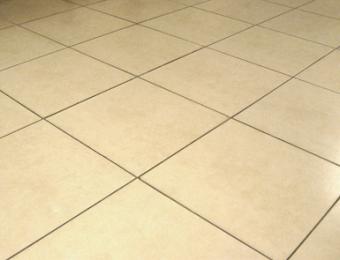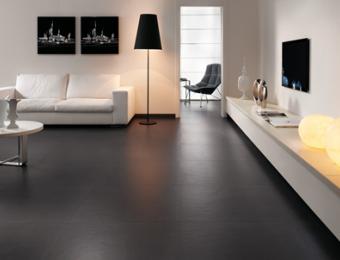
The type of stone you choose (and how it's finished) can affect both how the tiles look, and how much maintenance they'll need.
As the name suggests, natural stone tiles are tiles that are cut from stone (of the ‘natural’ variety). The word ‘natural’ is used to qualify this, because there actually is such a thing as ‘engineered stone’ too – a bit more about this later.
Natural stone tiles are likely to be more expensive than ceramic tiles, mostly because more effort goes into making them. They’re a very popular choice, thanks to the classic, natural look and feel they help to create.
What to consider when you’re buying natural stone tiles
Like all things you’re going to buy for your home, it’s a good idea to know what makes one stone tile different from the next. The look of the stone certainly does matter, but there’s a lot more to getting the right tiles than just picking the prettiest colour and texture.
Below are some of things you’ll need to consider:
- Cost – Some stone tiles are far more expensive than others, depending on the specific material, where it’s from and how rare the material is. The type of stone isn’t the only factor - marble's generally more expensive, but some types of marble will be cheaper and more abundant than certain granites.
- Porosity and absorption rate – this determines how easily a certain type of stone will absorb liquids, and how easily it’ll stain if the wrong things (particularly oily substances) come into contact with it. All natural stone is porous to some extent. Provided that the more porous stone tiles are periodically resealed, porosity isn't a huge problem.
- Hardness / durability – Harder stone is less likely to chip, crack, scratch or wear down as a result of foot traffic. Certain types of stone (like marble, limestone and travertine) are also prone to chemical etching from contact with acidic things like citrus fruit or certain cleaning products. Best not to leave bits of orange peel on beautiful marble tiles.
- Colour – Stones of the same basic type can look quite different, depending on where they’re from. Not all granites or marbles look the same, and if you’re after a particular look this is something you’ll need to consider.
- Consistency and variance – Some stones will have a more ‘consistent’ colour and veining pattern across a range of tiles, while others will naturally vary. Which is better is really a matter of taste.
- Finish and texture – The finish and texture of a tile will determine where it can or should be used – slippery, highly polished tiles are a terrible idea in bathrooms, for example. The texture is normally determined both by the way the stone is cut and finished, as well as which particular type of stone you’re using. Common finishes include polished, honed, flamed, and naturally clefted.
Common types of natural stone tiles
Stone tiles are made using many different types of natural stone, but there are a few usual suspects which tend to be more popular across the board. The types of stone tile you’ll most often see include:
- Granite – This can be flamed or honed for good slip-resistance or polished for a smooth, glossy appearance. It’s relatively strong, and when it’s polished up it’s reasonably non-porous – all of which makes it popular for kitchens and bathrooms.
- Marble – Luxurious and enchanting, but also quite porous and relatively easily scratched. There are some significant differences in terms of appearances and hardness / stain resistance between different marbles. Marble isn't always terribly expensive – but it certainly can be...
- Slate – Slate’s often used for floor tiles, and is either honed or ‘naturally cleft’, giving it the nice, organic texture most of us associate with this stone. Also has a low porosity and is very durable and forgiving.
- Sandstone – Hard, but not as hard as slate or granite. Sandstone is quite porous, and stays quite cool making it more popular for outdoor pavers than indoor tiles.
- Travertine – Partially metamorphosed limestone. Travertine's a very popular, light coloured stone that looks quite similar to marble - and which shares many of the same properties.
- Limestone – Can be polished very smooth, is relatively porous and easily scratched. Limestone tiles offer good colour consistency from one tile to the next.
- Onyx – A type of marble, and therefore soft and prone to etching when mistreated. Onyx has a beautiful translucency about it, and the colour and veining pattern vary significantly from tile to tile.
- Quartzite – comes in a variety of different colours including blue, purple and pink, and has a ‘sparkly’ quality about it.
How are natural stone tiles made?
Stone tiles are typically quarried by cutting off large pieces of rock, which are then cut and sliced into slabs using a large industrial saw. These slabs are then polished down to give them a nice, smooth finish, and are further cut down into the finished tiles.
There are some slight variations to this process, depending on the finish required for the tile and the type of stone. Slate, for example, is cut into tile-sized blocks and split thin with a chisel. From there, it's either left with a natural-cleft surface, or honed down smooth.
Natural stone tiles vs. engineered stone tiles
Engineered stone tiles are a fairly new invention. They’re created by mixing together crushed up quartz and a binding resin – the result of which is a fairly convincing ‘man-made’ stone. Engineered stone can be made to look like different types of natural stone, is very durable and has a low porosity. It’s also quite tough – and is popular both for tiles and for things like kitchen benchtops.
Engineered stone is likely to be cheaper than many types of natural stone – but many people would also argue that it lacks the natural character and charm of true natural stone.
Natural stone vs. ‘stoneware’
They have similar names, so it’s a bit too easy to confuse natural stone tiles with ‘stoneware’ tiles. While natural stone tiles are cut from stone, the term ‘stoneware’ actually refers to a type of ceramic, made from clay, which is similar to porcelain.
It’s unlikely you’ll get to the point of actually buying the wrong thing if you do confuse the two, but it’s helpful to know the difference so you don't sound like a tile rookie.
How to choose natural stone tiles
The things you’ll need to consider when choosing stone tiles include:
- Where they’ll be used – where they’re going to be used will determine how much wear and impact they’ll see, and how much moisture they’ll be exposed to. More durable stones will be more suitable than others in busier environments, and less porous stones are good for moist areas. This will also influence the type of texture or finish which is appropriate.
- What look you’re after – Entirely a personal choice. Different stones offer different looks, colours and finishes.
- What they’ll cost – There are huge differences in the costs of natural stone tiles. ‘Luxury’ imported stone tiles (particularly from Europe) can cost far more than stone from closer to home that’s available in abundance.
- Environmental impact –There’s a high environmental cost to importing heavy stone tiles thanks to the energy used to ship them here – and also a cost to their quarrying and production. At the same time, stone tiles can also be used to provide thermal mass and reduce heating costs - and they’re certainly going to last a lot longer than many other options.
|
Advantages
|
Disadvantages
|





